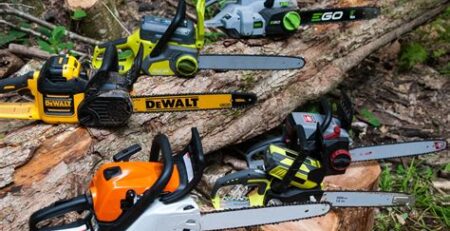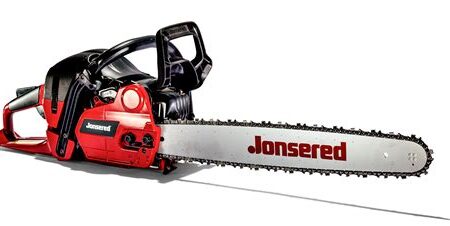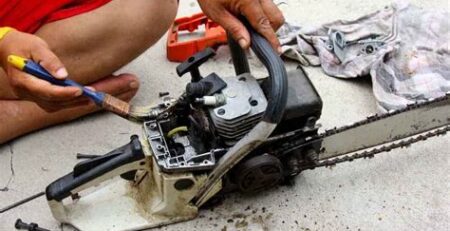Common Chainsaw Problems and How to Troubleshoot Them
Chainsaws are essential tools for professional loggers, homeowners, and outdoor enthusiasts alike. However, just like any mechanical device, chainsaws can sometimes experience problems that hinder their performance. In this article, we will address some of the most common issues encountered with chainsaws, such as engines failing to start, chainsaw cutting slowly or inconsistently, excessive vibration during operation, chain constantly coming loose or falling off, and excessive smoke or overheating. By understanding these problems and their potential solutions, you’ll be able to effectively troubleshoot and maintain the optimal performance of your chainsaw.
Engine Fails to Start
Having a reliable engine is crucial for the smooth operation of any machine or equipment. However, there can be instances when your engine refuses to start, leaving you frustrated and stranded. This can happen due to various reasons, ranging from minor issues to more significant problems. In this blog post, we will explore some common causes of engine failure to start and provide practical solutions to get your engine up and running again.
1. Fuel System Issues:
One of the most common reasons why an engine fails to start is due to fuel system problems. It is essential to ensure that your fuel tank has an adequate amount of fuel and that it is not contaminated. If your engine is not starting, check the fuel lines for any clogs or leaks. Additionally, make sure the fuel filter is clean and not clogged, as a clogged filter can prevent fuel from reaching the engine.
2. Ignition Problems:
Another common cause of engine failure to start is ignition-related issues. Check if the spark plug is in good condition and produces a strong spark. If the spark plug is dirty or damaged, it may need to be cleaned or replaced. Additionally, ensure that the ignition switch is turned on and that all connections are secure. Faulty ignition coils or wiring can also prevent the engine from starting.
3. Battery Troubles:
If your engine fails to start, the battery could be another potential culprit. A weak or dead battery can significantly affect the starting process. Check the battery terminals for corrosion or loose connections, as these can inhibit the flow of electricity. If necessary, charge the battery or replace it with a new one. Remember to follow proper safety precautions when handling batteries.
In conclusion, when your engine fails to start, it can be frustrating, but it is essential to remain calm and methodically diagnose the issue. By checking the fuel system, ignition components, and battery, you can often identify and resolve common problems. If you are unable to determine the cause or if the issue persists, it is advisable to seek professional assistance to avoid further damage to the engine. Remember, regular maintenance and timely repairs are key to ensuring the longevity and optimal performance of your engine.
Chainsaw Cuts Slowly or Inconsistently
A chainsaw is a powerful tool used for cutting trees and other wood materials. However, there may be instances where you notice that your chainsaw is cutting slowly or inconsistently. This can be frustrating and can greatly affect your productivity. In this blog post, we will discuss some possible reasons why your chainsaw is cutting slowly or inconsistently and provide you with some solutions to help you get back to cutting efficiently.
One possible reason why your chainsaw is cutting slowly or inconsistently is due to a dull or damaged chain. Over time, the chain on your chainsaw can become dull from cutting through tough materials. A dull chain will struggle to make clean cuts and may result in a slow and inconsistent cutting experience. To resolve this issue, you will need to sharpen or replace the chain. Sharpening the chain can be done using a chainsaw file or a chainsaw sharpener. Alternatively, if the chain is severely damaged, it may be necessary to replace it with a new one.
Another reason that may cause your chainsaw to cut slowly or inconsistently is a lack of chain tension. If the chain on your chainsaw is not properly tensioned, it may become loose and not engage properly with the guide bar. This can result in a slow and inconsistent cutting performance. To address this issue, you will need to adjust the chain tension. Refer to the manufacturer’s instructions on how to properly tension the chain on your specific chainsaw model. It is important to ensure that the chain is not too loose or too tight, as both can affect its cutting performance.
Additionally, a clogged or dirty chain can also cause your chainsaw to cut slowly or inconsistently. When cutting wood, sap and sawdust can accumulate on the chain, which can hinder its ability to make clean cuts. To resolve this issue, it is important to regularly clean the chain and remove any debris or buildup. You can use a wire brush or a specialized chain cleaning tool to remove the debris. Additionally, lubricating the chain with chainsaw bar oil will also help to keep it clean and running smoothly.
- Check for a dull or damaged chain
- Ensure proper chain tension
- Clean and lubricate the chain regularly
| Possible Causes | Solutions |
|---|---|
| Dull or damaged chain | Sharpen or replace the chain |
| Lack of chain tension | Adjust the chain tension |
| Clogged or dirty chain | Clean and lubricate the chain regularly |
Excessive Vibration during Operation
When using power tools, it is not uncommon to experience some level of vibration. However, if you notice excessive vibration during operation, it can be a cause for concern. Excessive vibration can not only affect the performance of the tool but also pose a safety risk to the user. In this blog post, we will explore the possible causes of excessive vibration during operation and provide helpful tips on how to address this issue.
Listed below are some of the common reasons why a power tool might experience excessive vibration:
- Imbalanced or worn-out parts: One of the primary reasons for excessive vibration is imbalanced or worn-out parts. Over time, the components of the tool such as the blade or chain can become unbalanced or worn, resulting in increased vibration during operation.
- Lack of proper maintenance: Another factor that can contribute to excessive vibration is a lack of proper maintenance. Regular cleaning, lubrication, and inspection of the tool can help prevent the build-up of debris or damage that could lead to increased vibration.
- Loose or damaged components: Loose or damaged components can also be a cause of excessive vibration. It is important to check for loose screws, bolts, or other parts of the tool and ensure they are tightened properly. Additionally, inspecting the tool for any visible damage such as cracks or fractures is crucial.
To address the issue of excessive vibration during operation, consider taking the following steps:
- Inspect and clean: Start by inspecting the tool for any signs of damage or loose parts. Clean the tool thoroughly, removing any debris or dirt that may be contributing to the vibration.
- Check for balance: If the tool is equipped with a blade or chain, check its balance. An imbalanced blade or chain can be a major source of excessive vibration. Replace or balance the components as necessary.
- Tighten all components: Ensure that all screws, bolts, and fasteners are properly tightened. This will help eliminate any potential sources of vibration caused by loose components.
- Consider professional assistance: If the vibration persists despite your efforts, it may be beneficial to seek professional assistance. A trained technician can diagnose and address any underlying issues with the tool that are causing the excessive vibration.
Remember, excessive vibration during operation should not be ignored, as it can lead to decreased performance, increased wear and tear on the tool, and potential safety hazards. By understanding the possible causes and taking appropriate steps to address the issue, you can ensure a smoother and safer operation of your power tool.
Chain Keeps Coming Loose or Falling Off
One of the common problems faced by chainsaw owners is the issue of their chain coming loose or falling off while in operation. This can be frustrating and can interrupt the work at hand. There can be several reasons behind this issue, ranging from user error to mechanical faults. In this blog post, we will explore some of the main causes behind a loose or falling off chain and discuss possible solutions.
One of the primary reasons for a chain coming loose or falling off is improper tensioning. Chainsaw chains need to be properly tensioned to ensure they stay in place during operation. If the chain is too loose, it may come off the bar unexpectedly. On the other hand, if the chain is too tight, it can cause excessive wear and put strain on the chain and bar. Therefore, it is essential to regularly check and adjust the tension of the chain.
Another common cause of a loose chain is a worn-out or damaged guide bar. The guide bar is the long metal piece around which the chain rotates. Over time, the bar can become worn, which can lead to a loose chain. Additionally, if the bar has any nicks or bends, it can affect the chain’s alignment and cause it to come loose. Regular inspection and maintenance of the guide bar can help prevent this issue.
Furthermore, using a dull or damaged chain can also contribute to the chain coming loose. A dull chain can cause the saw to kick back and increase the chances of the chain detaching from the bar. Regular chain sharpening and replacement of worn-out chains are necessary to maintain proper cutting performance and prevent the chain from coming loose during operation.
In conclusion, a chain that keeps coming loose or falling off can be a frustrating issue for chainsaw owners. However, by understanding the potential causes, such as improper tensioning, worn-out guide bars, and using dull chains, it becomes easier to address and prevent this problem. Regular maintenance, including proper tensioning, inspection of guide bars, and sharpening or replacing chains, can help keep the chain securely in place, ensuring a safer and more efficient chainsaw experience.
Table of Contents:
- Introduction
- Improper Tensioning
- Worn-out or Damaged Guide Bar
- Using Dull or Damaged Chains
- Conclusion
Excessive Smoke or Overheating
Experiencing excessive smoke or overheating during the operation of your equipment can be concerning. These issues can indicate potential problems with your engine or other components of your machine. Ignoring these signs can lead to further damage and may require costly repairs. It is important to identify and address the root cause of these issues to prevent any further damage to your equipment.
One possible cause of excessive smoke or overheating is an insufficient amount of oil or fuel mixture in your engine. This can cause the engine to overheat and produce excessive smoke. It is important to check the oil and fuel levels regularly and top them up as needed. Using the right fuel-to-oil ratio specified by the manufacturer is crucial to ensure proper lubrication and prevent overheating.
Another potential cause for excessive smoke or overheating is a clogged or dirty air filter. A dirty air filter can restrict the airflow to the engine, causing it to overheat. Regularly cleaning or replacing the air filter, as recommended by the equipment manufacturer, can help prevent this issue. Additionally, inspecting the air filter for any signs of damage or debris buildup is essential for maintaining optimal airflow and preventing overheating.
In some cases, excessive smoke or overheating can be a result of a malfunctioning spark plug. A faulty spark plug can cause incomplete combustion, leading to the production of excessive smoke. It is recommended to inspect the spark plug regularly and replace it if necessary. Follow the manufacturer’s guidelines for the correct spark plug type and gap specifications for your equipment.
Furthermore, it is crucial to ensure proper cooling of your equipment to prevent overheating. Ensure that the cooling fins and air vents are free from any obstructions or debris that may restrict airflow. Regularly cleaning these components can help maintain optimal cooling efficiency and reduce the risk of overheating.
To summarize, excessive smoke or overheating during the operation of your equipment can be indicative of underlying issues. Checking and maintaining the oil and fuel levels, cleaning or replacing the air filter, inspecting and replacing faulty spark plugs, and ensuring proper cooling are all essential steps to prevent and address these problems. Remember to always refer to the manufacturer’s guidelines for your specific equipment and seek professional assistance if needed.
Frequently Asked Questions
Why does the engine fail to start?
There could be several reasons for the engine failing to start, such as a clogged fuel filter, a faulty spark plug, or a flooded engine. It is recommended to check these components and ensure they are in proper working condition.
What can cause the chainsaw to cut slowly or inconsistently?
A chainsaw cutting slowly or inconsistently could be due to a dull chain, a loose or improperly tensioned chain, or a lack of proper lubrication. Sharpening the chain, adjusting the tension, and lubricating the bar and chain can improve cutting performance.
Why does the chainsaw experience excessive vibration during operation?
Excessive vibration during chainsaw operation can be caused by a variety of factors, including a loose or damaged chain, a damaged guide bar, or a worn-out engine mount. Checking and replacing any worn or damaged parts can help reduce vibration.
What causes the chain to keep coming loose or falling off?
A chain that repeatedly comes loose or falls off may be a result of improper tensioning, a stretched chain, or a worn-out bar. It is important to ensure that the chain is properly tensioned and replaced when necessary.
What can lead to excessive smoke or overheating of the chainsaw?
Excessive smoke or overheating in a chainsaw can occur due to issues such as a clogged air filter, a fuel mixture with too much oil, or an inadequate cooling system. Cleaning or replacing the air filter, adjusting the fuel mixture, and ensuring proper cooling can help resolve these problems.
How do I troubleshoot and fix a chainsaw that won’t start?
If your chainsaw won’t start, you can try a few troubleshooting steps. Check the spark plug for wear or damage, make sure the fuel tank has an adequate fuel level, and ensure the choke and ignition switch are in the correct positions. If the issue persists, it is recommended to consult a professional or refer to the manufacturer’s instructions.
What are some maintenance tips to keep a chainsaw in good condition?
To maintain a chainsaw’s performance and prolong its lifespan, it is advised to regularly clean the air filter, sharpen the chain, and lubricate the bar and chain. Additionally, inspecting and tightening the chain tension, checking for loose or damaged parts, and using high-quality fuel and oil mixture are beneficial for the chainsaw’s longevity.













Leave a Reply